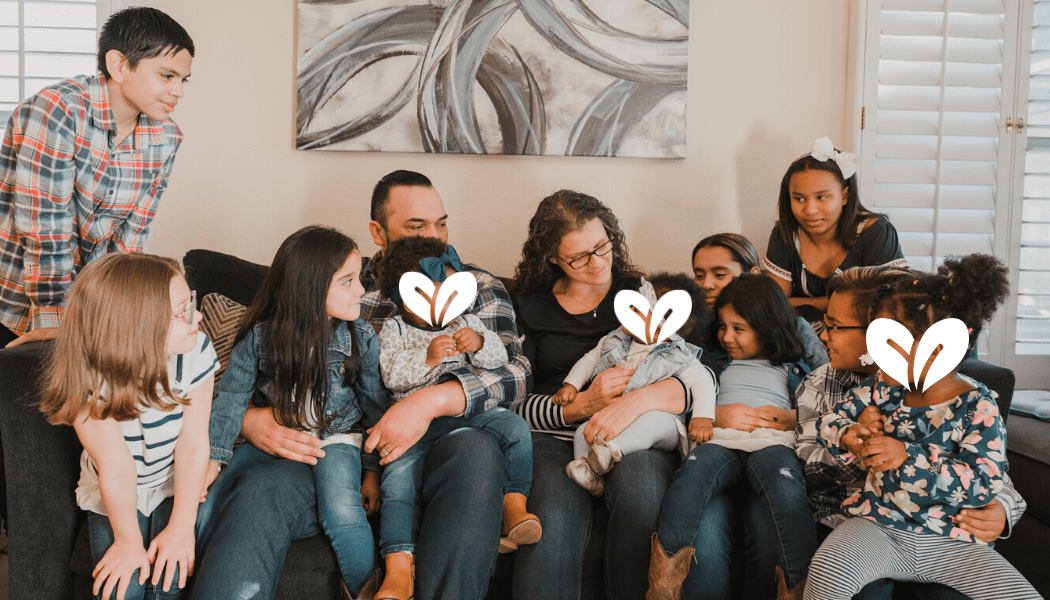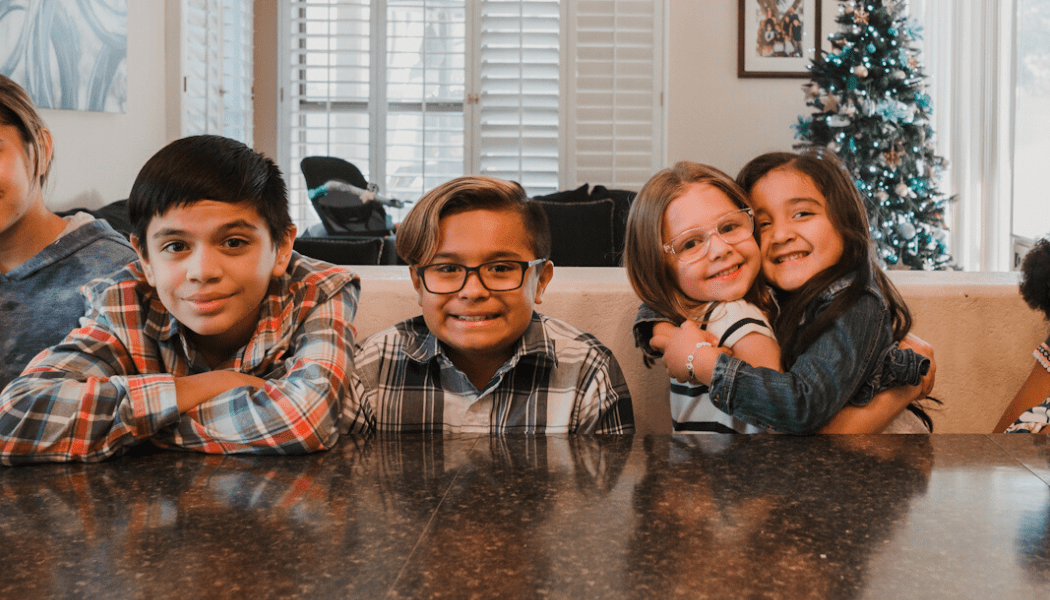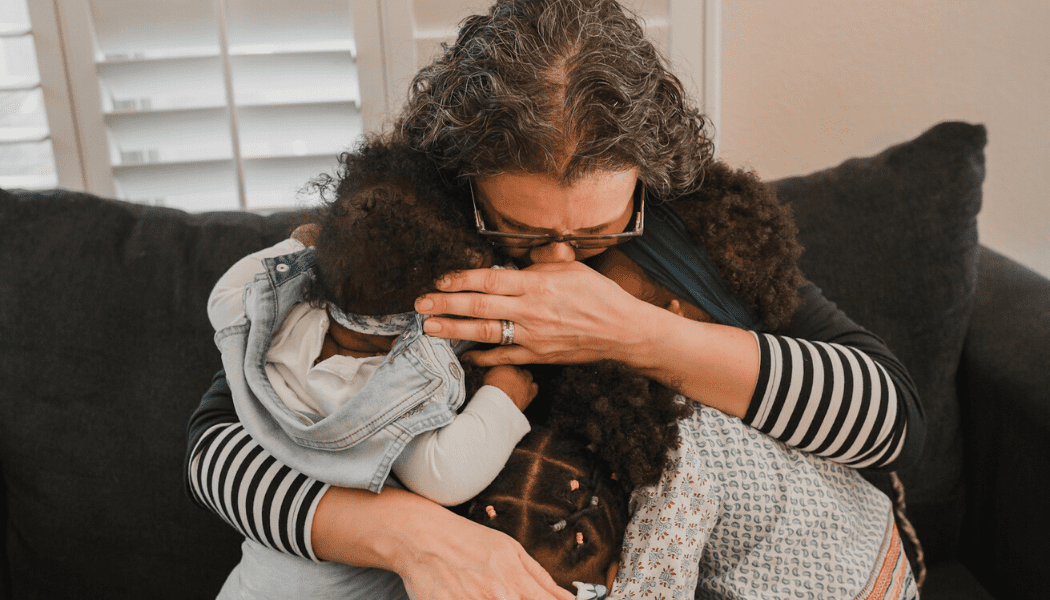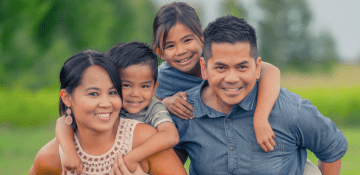
Foster Care Awareness Month 2023
To our community,
May marks the start of National Foster Care Awareness Month (NFCAM), an annual dedication to raising awareness about the challenges that children and young adults in foster care face. NFCAM is a powerful reminder that we all have a responsibility to uplift and support these children and youth, especially those who have endured trauma and hardship.
It is also a time to honor and commend the tireless efforts of foster parents, families, volunteers, child welfare professionals, and members of the community who have shown unwavering dedication to improving the lives of these vulnerable youth. These individuals work endlessly to provide safe and stable homes for children in need, help reunite families when possible, and support children and families as they navigate the complexities of the child welfare system.
In honor of this month, I want to share a story with you and some important information about foster care. No matter who you are, the foster care system impacts your life. Every years there are thousands of children in your local community in need of a loving home. Without the foster system, these children would have nowhere else to go.
Children in the foster care system are deeply in need of your help. Whether you want to foster a child, donate in support of a child, or simply raise awareness – we welcome your support. Please know that your kindness and generosity will directly impact the life of a foster child, providing them with a loving home.
Sincerely,


Kristina Gonzales
Foster Care Program Manager
A New Leaf
Click Below to View Each Section!
MEET MILA, A FOSTER MOM OF 44 PLACEMENTS
LEARN ABOUT THE FOSTER CARE SYSTEM
UNDERSTAND THE HISTORY OF FOSTER CARE
LEARN HOW FOSTER CARE IMPACTS CHILDREN
SEE THE STATUS OF FOSTER CARE IN ARIZONA
SEE AVAILABLE FOSTER CARE RESOURCES
Meet Mila’s Family, They Have Fostered Over 44 Children

Mila and her husband have fostered over 44 children through A New Leaf and adopted 7. Their kindness and dedication is changing lives through the foster care system, giving a home to children most in need of one.
“Me and my husband Christopher have cared for 44 foster children, and we have adopted 7 over the past 14 years of fostering through A New Leaf. Some people think that’s crazy, but I tell them they’re the crazy ones for not opening their homes to these incredible kids.”
Mila was married and ready to start her family, but when she struggled to have a child, she and her husband started to look into fostering. After the first few placements of children, they fell in love with providing a stable, loving home – even if that was only for a few months. After 7 placements, they adopted Logan.
“He was just three weeks old when he was placed with us through A New Leaf, and I knew we could never let him go. After that we adopted three more, all under the age of three! It was a bit of a shock to our household, but that’s what we wanted. We wanted to have a big family, and these kids made us complete.”

Fostering children came with challenges though, and Mila’s family was humbled by the obstacles they faced. Children from the foster system often come from very difficult circumstances that carry over into their new home. While every child had their hurdles, Mila reflected specifically on her son Logan.
“Logan spent the first three months of his life screaming, withdrawing from opiates he was exposed to in the womb. Since then he’s been diagnosed as being on the spectrum and he has ADHD and OCD. But wow is he just absolutely perfect for us, and he has grown into an incredible young man.”

“It was hard, but I will never forget that A New Leaf was there to help us along the way with classes, supplies like diapers or food, and even emotional support. It was scary at first, and you question yourself as a parent, but once you’re through the hard part your family starts to flourish.”
Mila and Christopher agreed to take a 6-month hiatus with their new family to bond and grow together. Mila wanted to give them as strong a foundation as possible, which meant lots of attention and support. But as the months passed, Mila wanted to consider fostering again.
“We had space in our home, and in our hearts still. So we kept fostering, and along the way three more slipped into the family, you know. We just can’t say no evidently! When a child you’ve been fostering and investing in becomes adoptable, saying no is just so hard.”

Mila and Christopher found their purpose in the foster care system, giving a permanent home to their 7 adopted children, and a temporary home for dozens more. Reflecting on all the lives they have touched over the past decade, they feel lucky.
“We are so thankful to A New Leaf for taking this journey with us, and even more thankful to every child that has trusted us as parents. It’s a special privilege to care for a child, and we plan to keep doing exactly that. Who knows how many kids we’ll foster in the next ten years!”
Contributed by:

Tanner Swanson
Communications Manager
A New Leaf
Learn About What Foster Care Does For Children In Need

Foster care is a legal system of care provided to children who are unable to live with their biological parents or guardians for various reasons. Foster care is intended to be a temporary solution until a permanent home can be found for the child. The goal of the foster care system is to provide children with a safe and supportive environment while their parents or guardians work to resolve the issues that caused the child’s removal. If it is not possible for the child to return home, other permanent placement options, such as adoption or guardianship, may be explored.
Foster care involves placing a child in the home of a licensed caregiver, who is referred to as a foster parent or foster family. These caregivers are trained, screened, and approved by the state to provide a safe and supportive environment for children. Foster parents can be single individuals or couples who have undergone extensive background checks and training to ensure they can provide a safe and stable home for a child.
Children in foster care come from a wide range of backgrounds and experiences, and their ages can range from infancy to 18 years old. While some children only need a temporary placement, others may require long-term foster care, or may be adopted by their foster parents or another family.
Foster Care Fast Facts
1. According to the most recent data from the U.S. Department of Health and Human Services, there were approximately 407,000 children in foster care in the United States in 2020.
2. The average age of children in foster care is 8 years old.
3. The most common reason for children to be placed in foster care is neglect, accounting for 61% of all placements.
4. The average length of time a child spends in foster care is 20 months.
5. In 2021, 54,200 foster kids were adopted which is a decline of approximately 3700 from the prior year.
6. Older children and youth are more likely to age out of the foster care system without finding a permanent home. 20 percent of foster youth will become homeless the day they age out.
7. Children in foster care face a variety of challenges, including higher rates of mental health issues, educational difficulties, and struggles with transitioning to adulthood.
Different Types of Foster Care
The different types of foster care available in Arizona reflect the diversity of children’s needs. Some children may require more intensive medical or behavioral care, while others may benefit from a more traditional family setting. Some children may also require short-term care, while others may need a longer period of stability and support.
Whatever the situation, the goal is to find the best fit for each child and to provide them with a supportive and safe environment to help them heal and thrive. The range of foster care options available in Arizona allows for a customized approach to meet the unique needs of each child in care.

Traditional Foster Care
This is the most common type of foster care. Children are placed with licensed foster parents who provide a safe and nurturing home environment. Foster parents receive training and support to provide for the physical, emotional, and developmental needs of the children in their care.

Kinship Care
This is when children are placed with relatives or other individuals who have a pre-existing relationship with the child. This type of foster care is often preferred, as it allows children to maintain connections with their families and communities.


Respite Care
This is temporary care provided to foster children by licensed foster parents or other caregivers when the primary caregiver needs rest or is unavailable. Respite care can range from a few hours to several days and is designed to provide foster parents with support and rest to prevent burnout.


Therapeutic Foster Care
This is designed to meet the needs of children with complex behavioral or emotional challenges. Foster parents receive specialized training to help them provide the additional support and services these children require.


Foster to Adopt
This is a type of foster care in which the goal is to eventually adopt the child. Foster parents provide temporary care while the child’s biological parents work to resolve the issues that led to the child’s placement in foster care. If the parents are unable to regain custody, the foster parents may be able to adopt the child.



Emergency Foster Care
This is provided to children who are in immediate need of a safe and stable home environment due to abuse, neglect, or other emergencies. Emergency foster parents must be available at short notice and may provide care for a few days or several weeks until a more permanent placement can be arranged.
Understanding The History Of Foster Care in Arizona


Foster Care has not always been a resource for our community, having only been adopted widely in the last 100 years. It is a program that relies on kind and open-hearted families opening their hearts to children in need.
The History Of Foster Care
The concept of caring for children who were not part of one’s own family dates back centuries, but the modern foster care system in the United States began in the mid-19th century. During this time, many children were orphaned or abandoned due to poverty, disease, or the impact of the Civil War. Religious and charitable organizations began to take in and care for these children, creating what were known as “asylums” or “orphanages.” However, the quality of care in these institutions was often poor, and many children suffered from neglect, abuse, or simply lack of attention. As a result, some states began to explore alternatives, such as placing children in the homes of relatives or other willing caregivers.
In the late 1800s, social reformers advocated for a more formalized system of placing children in foster homes. They believed that children would fare better in family-based settings rather than institutional care. As a result of their efforts, the New York Children’s Aid Society established the first organized foster care program in the United States in 1853. The program placed children in homes in rural areas of the country, where they would receive education and training in agriculture and other skills.
Over time, other states began to adopt foster care as a more humane and effective way of caring for children in need. In 1935, the Social Security Act established federal funding for child welfare programs, including foster care, which helped to standardize and expand the system.
Today, the foster care system continues to evolve as child welfare advocates work to improve outcomes for children and families. Despite ongoing challenges, foster care remains an important safety net for vulnerable children and youth in the United States.
The History Of Foster Care Month
Foster Care Awareness Month has a rich history that dates back to 1988. It was established to raise awareness of the needs of children and youth in foster care, recognize the contributions of foster parents, and encourage greater support for the child welfare system.
The National Foster Parent Association, a nonprofit organization that advocates for the needs of foster families and the children in their care, initiated the idea for Foster Care Awareness Month. The association recognized the need for a national campaign to bring attention to the issues facing foster children and families and to promote greater support for the child welfare system.
In 1988, President Ronald Reagan issued a proclamation designating May as National Foster Care Month. Since then, Foster Care Awareness Month has been observed annually, with a variety of events and activities held to promote awareness and support for foster care.
Understand How Foster Care Helps Children Overcome Challenges


Challenges Faced By Foster Children
Foster children often experience significant trauma due to the circumstances that led to their placement in foster care, such as abuse, neglect, or the loss of a caregiver. This trauma can have lasting effects on their mental health and well-being. Here are some of the common trauma and mental health issues that foster children may face:
Post-traumatic stress disorder (PTSD)
Depression and anxiety
Behavioral health challenges
Developmental delays
Substance use challenges
Attachment disorders
Lack of educational stability
Special education needs
Academic under-performance
Attendance challenges
Lack of educational advocacy
It is important for foster children to receive comprehensive support services to address their trauma and mental health needs. This may include counseling, therapy, medication, and other interventions to promote healing and resilience. Additionally, schools and educators can play a critical role in supporting the educational success of foster care children by providing stability, understanding, and support to help them achieve their academic potential.


How Foster Care Can Help Children
Firstly, foster care provides children with a safe and stable environment. Children in foster care have often experienced chaotic or unstable living situations, and being placed in a safe and nurturing environment can help them feel secure and stable. Foster parents are trained to provide a supportive and loving home, which can help children develop a sense of trust and security.
Secondly, foster care can provide children with access to essential services and resources. Many children in foster care have complex medical and mental health needs, and foster parents are trained to provide the care and support that these children require. Additionally, children in foster care may have experienced disruptions in their education, and foster parents are encouraged to provide educational support and ensure that children attend school regularly.
Thirdly, foster care can help children develop social skills and relationships. Children in foster care may have experienced social isolation or neglect, and being placed in a foster home can provide them with the opportunity to form healthy attachments and relationships. Foster parents are encouraged to provide opportunities for children to engage in social activities and connect with peers.
Finally, foster care can provide children with a sense of belonging and family. Foster parents are trained to provide a loving and supportive home environment, and many children in foster care come to see their foster parents and siblings as their family. This sense of belonging can be particularly important for children who have experienced loss or trauma.
The Status Of Foster Care In Arizona


A New Leaf offers services to hundreds of individuals who experience serious mental illness and need ongoing, comprehensive support.
The foster care system in Arizona faces many of the same challenges as those in other states, including a shortage of foster homes, high caseloads for caseworkers, and inadequate funding. However, Arizona has also implemented several initiatives to improve the system and better support children and families involved in foster care.
One of the major challenges in Arizona is a shortage of foster homes. In response, the state has implemented several programs to recruit and retain foster parents, including increased training and support, financial incentives, and partnerships with faith-based organizations and other community groups. A New Leaf offers many of these resources for prospective and current foster parents.
Another issue facing the foster care system in Arizona is a high turnover rate among caseworkers, which can lead to instability for children and families in care. The state has taken steps to address this issue by offering higher salaries and benefits for caseworkers, as well as improving training and professional development opportunities.
Additionally, Arizona has implemented several programs to improve outcomes for children and families in foster care, including a focus on family preservation and reunification. The state has also invested in programs aimed at improving the educational outcomes of children in care and ensuring that they have access to healthcare and mental health services.
Despite these efforts, there are still areas for improvement in the Arizona foster care system. For example, the state has faced criticism for its handling of child abuse and neglect cases, with some advocates calling for more transparency and accountability in the system. Additionally, there are ongoing challenges related to the recruitment and retention of foster parents, as well as the need for more resources to support children and families involved in foster care.
As we observe National Foster Care Awareness Month, it is vital to recognize the urgent need for greater investments in the foster care system and to promote more extensive support and resources for foster children and young adults. We must prioritize the needs of these vulnerable youth and work towards systemic changes that can ensure that all foster care recipients receive the same opportunities and access to care and support as their peers. Ultimately, our collective actions and commitment can make a significant difference in the lives of foster children and young adults, helping them to overcome adversity and thrive in spite of the challenges they have faced.
Learn About Foster Care Resources Available In Arizona


A New Leaf’s Foster Care Program
A New Leaf believes that every child deserves a loving and stable home, and they are committed to serving families and children regardless of ethnicity, age, gender, or sexual orientation. We believe that diversity enriches our community and that all families have the potential to provide a safe and loving home for a child in need. Through meaningful community programs, A New Leaf provides safe and nurturing environments for children who have experienced trauma, while also supporting families who open their hearts and homes to these children.
If you are interested in becoming a foster parent or adopting a child, A New Leaf can provide you with the support and resources you need. They offer a range of services, including training and certification, ongoing support, and access to essential services and resources. Their goal is to ensure that foster parents and adoptive families have the tools they need to provide the best possible care for children in foster care. By opening your heart and home to a child in foster care, you have the opportunity to make a lasting impact on their life.
A New Leaf recognizes that becoming a foster parent or adopting a child can be a challenging and sometimes overwhelming process. That’s why we are committed to providing families with the support they need to succeed. A New Leaf offers ongoing training and support to ensure that families have the knowledge and skills they need to provide the best possible care for children in foster care. Our team of experts can answer any questions you may have and provide you with the support and resources you need to create a loving and stable home for a child in need.


Other Community Foster Care Programs
A New Leaf is a highly regarded organization and we have served thousands of foster families. We may be the best organization to help you or a loved one to become licensed and care for a child. However, it’s important to note that there are many other organizations in Arizona that also provide foster care services. Each organization has its own unique approach, requirements, and benefits, and it’s important to research and explore your options to find the best fit for you and your family. Here are some other organizations in Arizona that provide foster care services:
Arizona Friends of Foster Children Foundation
-
- Creates opportunities to build self-esteem and empower children and youth in foster care.
- Phoenix, Arizona
-
- Phoenix, Arizona
- Helps 14000+ children in foster care throughout AZ by providing the necessities they need to thrive.
Arizona Children’s Association
-
- Yuma, Arizona
- One of the largest foster care providers in the state! Trains and supports foster care families.
-
- Phoenix, Arizona
- Helps to strengthen families and serve at-risk children through ministry and their nine impactful programs across Arizona.
AASK – Aid to Adoption of Special Kids
-
- Phoenix, Arizona
- One of the largest foster care agencies in Arizona. Finds the right foster home for each child they serve.
-
- Phoenix, Arizona
- Helps children in foster care by licensing and certifying parents for foster care and adoption.

